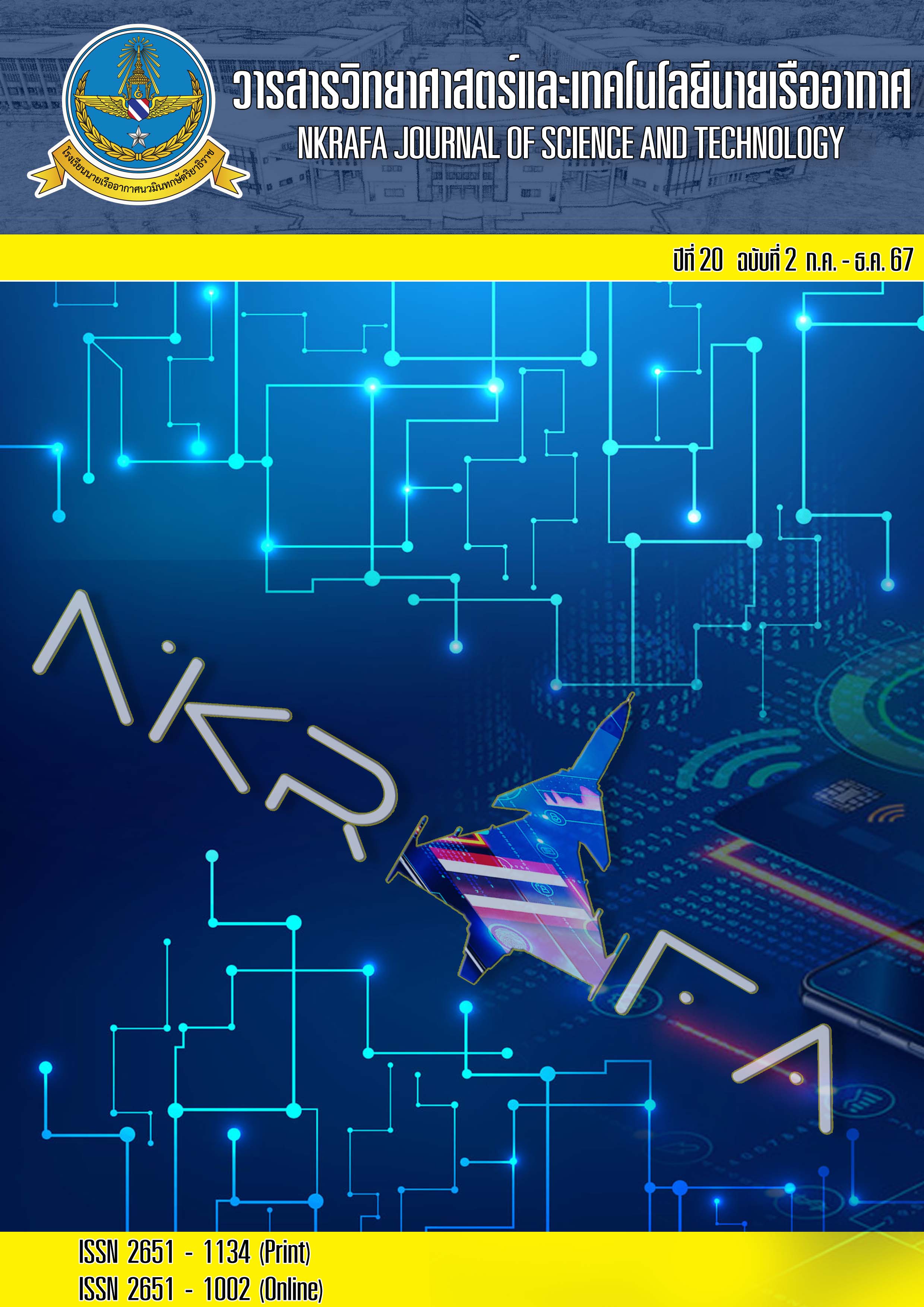Development of Lotus Yarn Using Natural Dyeing Techniqye
Main Article Content
Abstract
This study aims to develop lotus yarn using natural dyeing technique and natural dyes such as lac, garcinia skin, and indigo, in four steps, with three shades (0.5, 1 and 2 kilograms) per one kilogram of lotus yarn. This model natural lotus yarn dyeing technique influences the dye adhesion quality of lotus yarns, as well as their chemical properties. It was found that the dye adhesion against washing, compared to the Community Product Standard that required at least 2-3 out of 5 in terms of natural dye washing resistance, met the standard. The dye resistance against sweat, in both acidic and basic conditions, was compared to that of the Community Product Standard, that required at least 2-3 out of 5 in terms of natural dye washing resistance. The test results were found to be in accordance with the standard criteria.
Article Details

This work is licensed under a Creative Commons Attribution-NonCommercial-NoDerivatives 4.0 International License.
- Content and information in articles published in NKRAFA Journal of Science and Technology are comment and responsibility of authors of articles directly. Journal editorial do no need to agree or share any responsibility.
- NKRAFA Journal of Science and Technology Articles holds the copyright of the content, pictures, images etc. which published in it. If any person or agency require to reuse all or some part of articles, the permission must be obtained from the NKRAFA Journal of Science and Technology.
References
Vuthiganond, N., Chitichotpanya, P., Nakpathom, M., and Mongkholrattanasit, R. (2022). Ecological dyeing of acrylic yarn with colorant derived from natural lac dye. Journal of Metals, Materials and Minerals, 32(4), 71-78. Ekasit Meepraseartsagool, P. U. (2023). Innovation From The Development of Nelumbo Nucifra Gaertn Fiber Using Plasna Process. Art Pritas Journal , 70.
กิตติ ศรี นุช ศาสตร์. (2018). โครงสร้าง และ สมบัติ วัสดุ เสริม แรง เส้นใยแก้ว สำหรับ สร้าง ชิ้น ส่วน อากาศยาน ไร้ นักบิน. วารสารนายเรืออากาศวิชาการด้านวิทยาศาสตร์และเทคโนโลยี, 14, 20-24.
Guan, Q. F., Han, Z. M., Zhu, Y., Xu, W. L., Yang, H. B., Ling, Z. and Yu, S. H. (2021). Bio-inspired lotus-fiber-like spiral hydrogel bacterial cellulose fibers. Nano letters, 21(2), 952-958.
Institute, I. S. (2024, January 15). Industrial Standards Institute. Retrieved from www.tisi.go.th
Mahamasuhaimi Masae, P. J. (2017). Fastness and UV Protection of Silk Dyed With Tea . Srinakharinwirot University (Journal of Science and Technology) , 76-79.
กนกพรรณ ศักดิ์สุริยา. (2549). ผลของอุณหภูมิและภาระบรรทุกทางชลศาสตร์ต่อการดูดติดของสีรีแอคทีฟโดยวัสดุ
เหลือใช้ทางการเกษตร. ในวิทยานิพนธ์ปริญญามหาบัณฑิต, สาขาวิชาวิศวกรรมสิ่งแวดล้อม (หน้า 65-58). เชียงใหม่:มหาวิทยาลัยเชียงใหม่
Mongkholrattanasit, R. (2022). Bleaching, dyeing, printing, designing and creating handwoven cotton products. Bangkok.
Khwanhathai Aonfak1 Nittaya Kanakiat, P. U. (2016). Dyeing Polyester Fabrics with Curcumin using Infrared Dyeing Machine. Burapha Science Journal, 25-26.
Sontisombat, P. C. (2019). An Application of Polycationic Agent to Improve the Dyeing Behaviourof Direct Dyes on Cotton Fabric. Journal of Engineering, RMUTT, 13 – 14
Thai Community Product Standard. (2015). Products Made from Hand Woven Fabrics. Retrieved on January 15,2024, from https://tcps.tisi.go.th/pub/tcps0828_58

